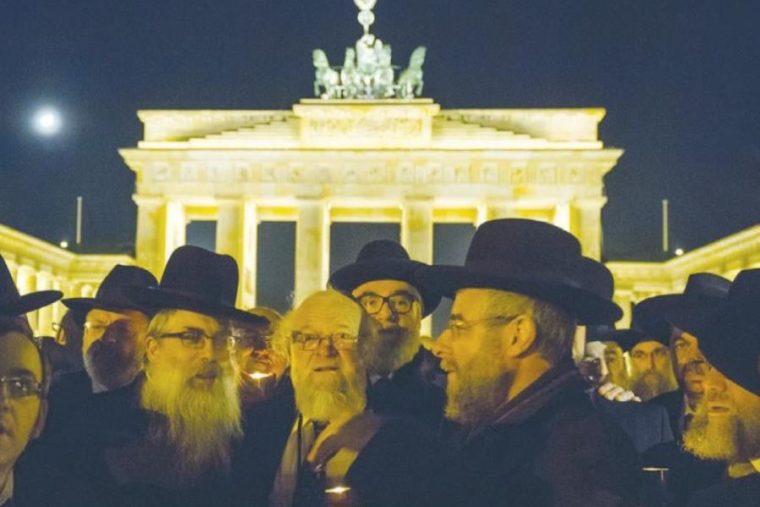NOTE THE TIMELINE of events leading to Kristallnacht: 1931, 1933, 1935.
‘In 1931, Weimar authorities discovered plans for a Nazi takeover in which Jews would be denied food and persons refusing to surrender their guns within 24 hours would be executed. They were written by Werner Best, a future Gestapo official. In reaction to such threats, the government authorized the registration of all firearms and the confiscation thereof, if required for “public safety.” The interior minister warned that the records must not fall into the hands of any extremist group.
‘In 1933, the ultimate extremist group, led by Adolf Hitler, seized power and used the records to identify, disarm, and attack political opponents and Jews. Constitutional rights were suspended, and mass searches for and seizures of guns and dissident publications ensued. Police revoked gun licenses of Social Democrats and others who were not “politically reliable.”’
(Quoted from: http://www.nationalreview.com/…/how-nazis-used-gun-control-…)
The Nuremberg laws that were passed in Germany in 1935 had stripped Jews of their citizenship, their jobs, their radios; their freedom to walk on the sidewalk, take a tram, sit on a park bench, go to the cinema; their right to be treated at a public hospital or attend a public school. Books by Jewish authors and scholars were turned to ashes in giant bonfires, presaging the burning of Jews’ bodies in crematoria five years later.
November 9 marks the 79th anniversary of Kristallnacht, “The Night of Broken Glass,” a major milestone in the persecution of Jews under the Third Reich and an unusually important event which took place in full public view, but whose significance was unfortunately not fully understood at the time.
The story ostensibly begins with the expulsion from Germany in late October 1938 of approximately 17,000 Polish Jews, whose Polish citizenship had been revoked by the Polish government. The Poles refused to allow them to enter and they were stranded on the German-Polish border under extremely difficult conditions. Among those expelled was the Grynszpan family from Hanover, whose son Herschel was living in Paris at the time. Incensed by the suffering of his parents and the others, he bought a gun, walked into the German Legation in Paris on November 7, and asked to see an embassy official. He was taken to the office of third secretary Ernst vom Rath, whom he shot and badly wounded. (Ironically, at that time vom Rath was under suspicion by the Gestapo for expressing anti-Nazi sympathies, largely based on the mistreatment of Jews in Germany.)
Two days later, on November 9, vom Rath died of his wounds. That date also marked the anniversary of the Nazis’ failed Beer Hall Putsch of 1923, and at the gathering in Munich to mark that event, propaganda minister Joseph Goebbels gave a fiery speech calling for spontaneous violence against the Jews. In his words, “[T]he Fuehrer has decided that… demonstrations should not be organized by the Party, but insofar as they erupt spontaneously, they are not to be hampered.” Thus vom Rath’s murder served as the excuse for the outbreak of massive “spontaneous” violence against Jews and Jewish institutions throughout the Third Reich, which at that time included Austria.
by Efraim Zuroff



